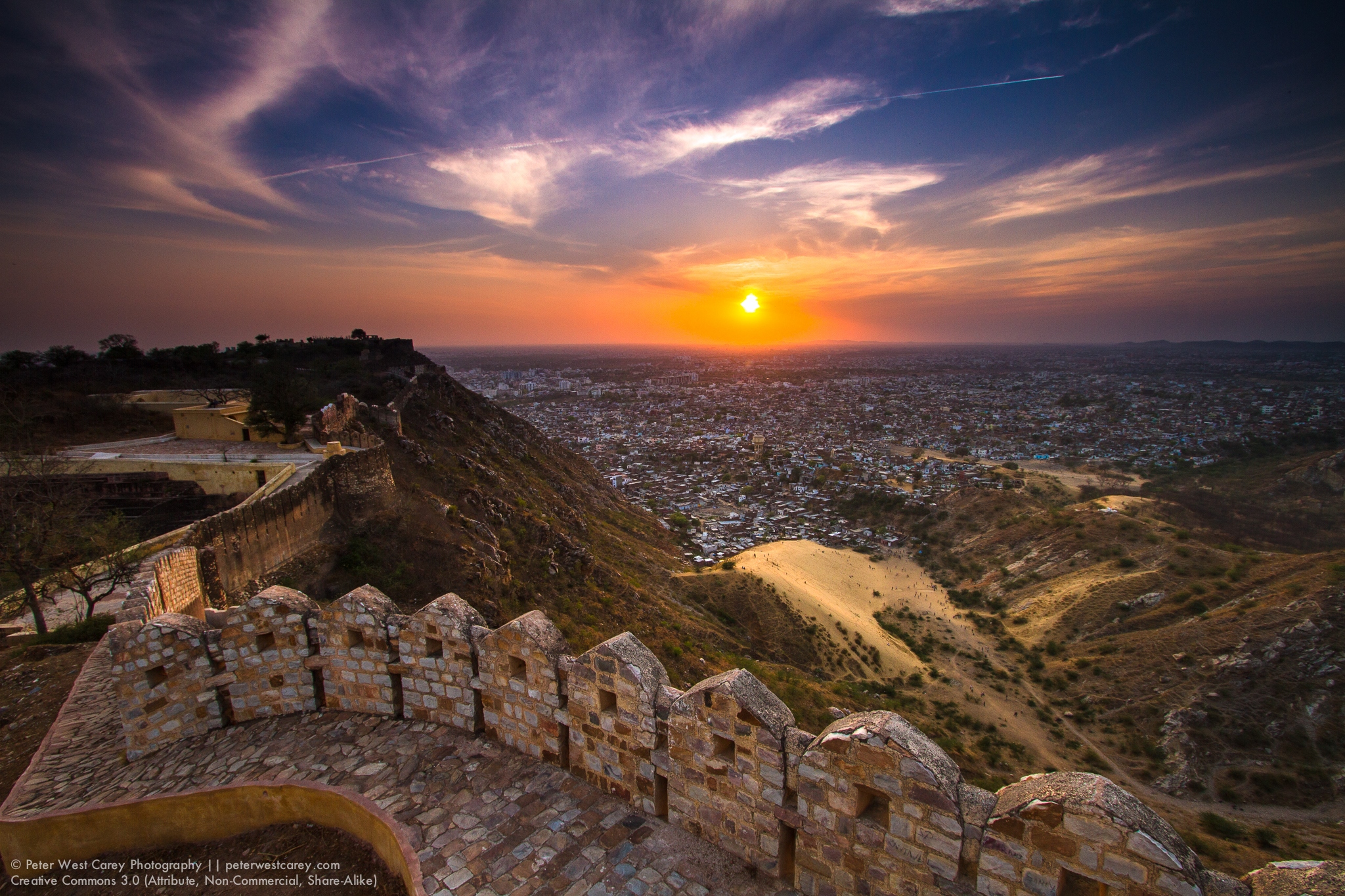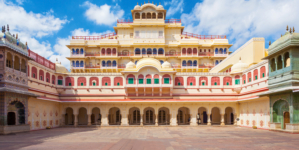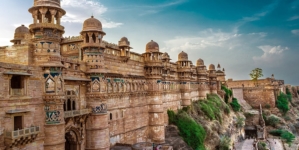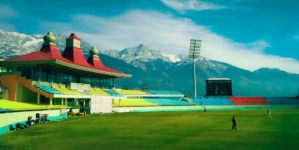Contents
- 1 History of Nahargarh Fort, Jaipur
- 1.1 Architecture and Structure of Nahargarh Fort
- 1.2 Facts You Should Know About Nahargarh Fort
- 1.3 What to See at Nahargarh Fort
- 1.4 Timings and Entry Fees for Nahargarh Fort
- 1.5 Best Time to Visit Nahargarh Fort
- 1.6 How to Reach Nahargarh Fort
- 1.7 Local Cuisine Around Nahargarh Fort
- 1.8 Final Thoughts
- 1.9 Nearby Tourist Attractions In Jaipur
History of Nahargarh Fort, Jaipur
Located on the Aravalli hills, Nahargarh Fort offers one of the most stunning panoramic views of the Pink City, Jaipur. The fort stands as a testament to Rajasthan’s rich history, with architectural beauty and strategic military design. Maharaja Sawai Jai Singh II, the founder of Jaipur, built the fort in 1734 to protect the city from invasions and also serve as a refuge for the royal family.
The fort was initially named Sudarshangarh, but local legend claims it was haunted by the ghost of Nahar Singh Bhomia, a prince whose spirit reportedly troubled the construction. To calm the troubled spirit, the king built a temple, and shortly afterward, construction of the fort resumed. The name “Nahargarh,” meaning “Abode of Tigers,” was chosen to reflect the fort’s protective role for Jaipur and the strength of the royal family. Over the years, Nahargarh Fort has been much more than just a royal getaway. It has also stood as a stronghold in times of war and a haven during the 1857 uprising.

Architecture and Structure of Nahargarh Fort
The architecture of Nahargarh Fort is a beautiful blend of Rajput and Mughal styles, with elements that reflect both defensive structures and royal luxury. The fort is not only practical but also designed to keep the royal family cool in the scorching heat of Rajasthan, which is one of the reasons it continues to fascinate visitors.
- Madhavendra Bhawan: At the heart of Nahargarh Fort is Madhavendra Bhawan, a royal palace with several suites designed for the king and his queens. Each suite is beautifully decorated with paintings and artwork depicting royal life, battles, festivals, and court scenes. Additionally, the rooms feature advanced water storage systems, showcasing the ingenuity of the time.
- Diwan-i-Aam: The public audience hall, where common folk could meet the king, is adorned with massive arches and pillars. It reflects the rulers’ strength and their ability to govern and protect the kingdom.
- Sheesh Mahal: This part of Nahargarh Fort is filled with mirrors, so it has the name Mirror Palace or Sheesh Mahal. This palace glitters with intricate glasswork, ideal for a photographer’s lens. Mirrors in the walls and ceilings reflect light to create a sort of magic atmosphere.
- Fort Towers and Walls: The fort is surrounded by thick walls and strong towers built to protect the fort from external threats. The walls offer panoramic views of Jaipur, and visitors can enjoy the city from the top. The towers were strategically placed at regular intervals to ensure that the fort could be defended from all sides. The fort walls are not just defensive; they also offer a great chance to admire the breathtaking scenery around the fort.
- Stepwell: The fort is also home to an impressive stepwell, designed to store water during the dry months. This symmetrical well is not only a functional structure but also adds to the overall beauty of the fort.
Facts You Should Know About Nahargarh Fort
A haunted past: The fort was originally called Sudarshangarh but got its present name because of the ghost of Nahar Singh Bhomia claiming to have created a ruckus during the construction. And the temple constructed in his honor placated the spirit.
The Hidden Tunnels:It is said that the Nahargarh Fort has secret tunnels which connect it to the Amer and Jaigarh Forts that could have been used by the royal family to escape in case of a war.
Bollywood’s Favourite : The fort features prominently in several Bollywood films, including Rang De Basanti, making it a favorite haunt for filmmakers and photographers.
The Enigmatic Water System: Nahargarh Fort’s stepwell is a testament to engineering brilliance, built to capture and deliver water even during dry spells.
A Romantic Getaway: Lots of locals and tourists come to watch the sunset from Nahargarh Fort, overlooking Jaipur’s twinkling lights, so it’s popular with couples.
What to See at Nahargarh Fort
Nahargarh Fort is not only known for its beautiful architecture and rich history, but it still has many places to visit, which attracts tourists.
- Madhavendra Palace: This suite complex, built for the king and his queens, is an architectural marvel. The detailed paintings evoke a sense of royal grandeur and provide a glimpse into Rajasthan’s grand past.
- Rajasthan Wax Museum: For those interested in contemporary attractions, the Rajasthan Wax Museum, located within the fort, features lifelike wax statues of famous personalities from Bollywood, politics, sports, and more.
- Sheesh Mahal: The glasswork and mirror decorations in this palace are among the most Instagrammable at Nahargarh Fort. The palace is captivating, particularly when illuminated by sunlight during the day or artificial light in the evening.
- Jaipur Sculpture Park: The outdoor sculpture park adds an artistic touch to the fort. With both contemporary and traditional sculptures, it’s a great spot for art lovers.
- Nahargarh Biological Park: Situated close to the fort, the biological park has wildlife including tigers, leopards and birds, making this an ideal stop for nature lovers.
- Stepwell: Not only is the stepwell practical, but it is also a beautiful sight with its symmetrical design. It’s a perfect spot for a photos.
- Sound and Light Show: In the evening, the fort organizes a sound and light show which speaks about the history of the fort and Jaipur. The show’s format does justice to the fort’s rich history and the legend surrounding it.
Timings and Entry Fees for Nahargarh Fort
Here’s what you need to know about visiting the fort:
- Timings: Open daily from 10:00 AM to 10:00 PM.
- Entry Fees:
- Indians: ₹50 per person
- Foreigners: ₹200 per person
- Students: ₹25 (valid ID required)
To make the most of your visit, it’s recommended to arrive during the day for spectacular views and then stay for the sunset. You can also visit at night when the fort’s illuminated walls present a whole new experience.
Best Time to Visit Nahargarh Fort
The ideal time to visit is between October and March, when the weather in Jaipur is more pleasant. The cooler months make it easier to explore and enjoy the fort. While summer (April to June) can be unbearable, with temperatures above 40°C, the monsoon season (July to September) brings lush greenery but also increases the risks of slippery paths and rain.
How to Reach Nahargarh Fort
Nahargarh Fort is located around 6 km from Jaipur city center. There are several ways to reach the fort:
- By Road: Auto rickshaws, taxis, or private vehicles can take you to the fort. The journey offers beautiful views and is fairly straightforward.
- By Bus: Rajasthan State Transport buses and private tourist buses regularly run routes connecting the fort to Jaipur’s main areas.
- By Flight: The nearest airport is Jaipur International Airport, located about 25 km from the fort. Taxis are easily available from the airport.
- By Train: Jaipur Junction Railway Station is around 17 km from the fort. From there, you can take a taxi, auto-rickshaw, or bus to reach the fort.
- By Cycle or Trek: For an adventurous experience, you can also cycle or trek up to the fort, which provides an opportunity to enjoy scenic views along the way.
Local Cuisine Around Nahargarh Fort
If you’re hungry, there are plenty of delicious vegetarian Rajasthani dishes to try in the nearby area.
- Dal Baati Churma: A traditional dish made of baked wheat dough balls (baati), served with lentils (dal) and a sweet crumble called churma.
- Gatte ki Sabzi: Dumplings made of gram flour, cooked in a tangy yogurt-based gravy.
- Ker Sangri: A spicy dish made from dried beans and berries found in desert shrubs, served with roti or rice.
- Aloo Pyaz ki Kachori: Deep-fried pastries filled with spiced potatoes and onions.
- Dahi Wada: Deep-fried lentil balls served with yogurt and chutneys.
- Samosa: Fried dumplings filled with spiced potatoes, perfect for a quick snack.
- Ghevar: A traditional sweet soaked in sugar syrup, typically served during festivals.
The local eateries around the fort serve these tasty treats, giving you an authentic taste of Rajasthan.
Final Thoughts
Nahargarh Fort is more than just a historical landmark. It is a living piece of Rajasthan’s rich cultural heritage. With its stunning architecture, strategic location, and breathtaking views of Jaipur, it remains a must-visit spot for anyone traveling to the city. Whether you’re exploring the royal suites, enjoying the sunset, or savoring the local cuisine, Nahargarh Fort offers something for everyone.
💬 Have you visited Nahargarh Fort? Share your experience in the comments!
🔗 Found this guide helpful? Share it with fellow travelers!
Nearby Tourist Attractions In Jaipur
- Jantar Mantar
- Jal Mahal Jaipur
- Jaigarh Fort
- Amer Fort Rajasthan
- City Palace, Jaipur
- Rajasthan Forts and Haveli
- Kumbhalgarh Fort





































